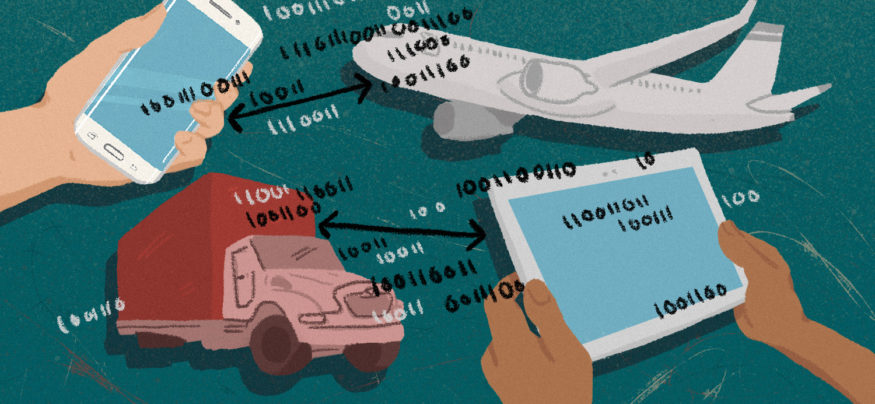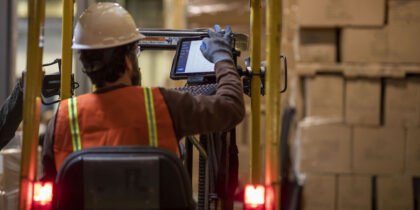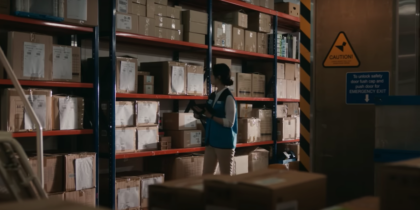From aviation maintenance, repair and overhaul (MRO) providers to trucking companies to major shippers, the accessibility of big data in logistics via mobile devices puts powerful tools in the hands of everyone from shop mechanics to CFOs. Not surprisingly, research firm Gartner predicts some 6.4 billion devices will be connected to the Internet of Things in 2016, which will only increase the amount of data available to transportation companies. This two-way data flow enabled by smartphones and tablets means organizations can develop new insights into performance and profitability.
Aviation MRO Efficiency Soars
Data is the lifeblood of an MRO organization, and it’s as close as the nearest mobile device.
For airlines, enterprise-level MRO software dramatically reduces costs and aircraft downtime. A typical passenger aircraft has about 3,000 components that must be managed and tracked. Aircraft are serviced according to operating hours, so every component’s service life must be monitored and coordinated with scheduled maintenance routines. Some airlines handle their own maintenance; others outsource all or portions of their MRO activities.
Technicians in the hangar bay can access service data, send photos, check inventories, order parts and manage the workflow from smartphones and tablets, without having to take the time to wait for an email or fax in a report. Aircraft en route can automatically send fault reports to the ground crew, who can be prepared to respond when the plane arrives.
With the aviation MRO system, managers can interface with accounting and human resources systems to ensure technicians have current credentials that permit them to work on an aircraft and its components.
Truck Fleets Deliver Visibility and Efficiency
With onboard telematics, common carrier and private trucking fleets can have visibility into the driving patterns of every truck — location data as well as every shift, acceleration, brake application and idle time. For fleet managers, turning that data into actionable intelligence and communicating it through the enterprise becomes a monumental challenge.
With in-cab smartphones and tablets — often ruggedized versions of consumer-level devices — fleet operators can communicate critical information back through the driver pool. Drivers can receive customized feedback on their driving performance, and several companies are developing tools that will allow drivers to compete with one another on factors like fuel efficiency. Customized, crowdsourced routing recommendations and geo-fencing help ensure safe and accurate access to customer sites.
With data flowing from trucks, shippers will have greater visibility into shipment locations to optimize load planning and capacity utilization. The capability to reroute and manage shipments will provide greater flexibility and cost savings for the entire supply chain. Drivers can receive alerts on their in-cab devices, saving time and fuel costs and boosting the customer experience.
Using an Android-based smartphone or tablet allows integration partners to add new functionality to the device.
Distribution Centers Support Omnichannel Retailing
The e-commerce explosion has strained the capabilities of distribution centers worldwide, and operations organizations are turning to mobile device technology, according to DC Velocity magazine. Nearly two-thirds of distribution centers support omnichannel operations that fulfill orders placed both online and in stores. But the fast pace leads to picking errors that drive up costs — DC Velocity reports the average worldwide cost is $59 per incident — and batter customer satisfaction.
To tackle picking errors, distribution centers are looking to mobile devices and voice-direction technology. Using smartphones and tablets, warehouse software directs workers by verbal commands via wireless headsets, which can lead to a gain of up to one hour of productivity per worker each month.
Big data in logistics can’t transform the enterprise if it’s locked inside computers. Energize the enterprise with the power of information available on mobile devices for a complete logistics overhaul.







